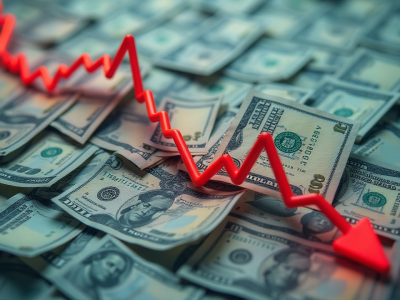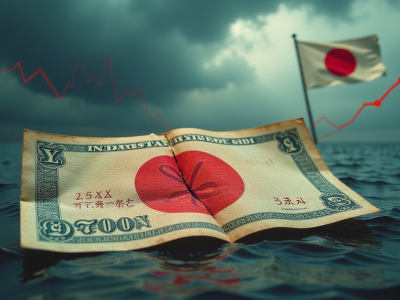
The Swiss franc continued to strengthen against the US dollar and the euro as the mood among central banks continues changing and as demand for safe havens jumped.
The USD/CHF exchange rate was trading at 0.8495 on Friday, down by almost 8% from its highest point this year. Similarly, the EUR/CHF pair has crashed to 0.9412, lower than the year-to-date high of 0.9930.
Safe haven demand
One of the top reasons why the Swiss currency has soared is that there is increased demand for safe havens as global risks rise.
In the United States, public debt has jumped to a record high of $35.2 trillion and the number is rising by $1 trillion every three months or so.
Unfortunately, Donald Trump and Kamala Harris have not made dealing with the budget deficit a big priority. Trump’s actions, including tax cuts, are expected to widen the deficit substantially in the next few years.
Harris has hinted that she will support raising taxes on the wealthy to fund her social welfare projects. While her policies would reduce the deficit, they have limited chances of passing, especially if the Congress is divided.
The Swiss franc is often seen as one of the most viable alternative currency because of the country’s neutrality and good balance sheet. Unlike the US and Europe, Switzerland rarely sanctions people and entities and it rarely gets involved in other countries affairs.
Most importantly, the country has one of the cleanest balance sheets globally with a debt to GDP ratio of less than 40%. The euro area has a figure of 90%, with countries like Italy, Greece, and Spain having higher ratios. In the United States, the ratio has crossed 100%.
SNB under pressure to intervene
The Swiss National Bank (SNB) is, therefore, under pressure to intervene in the market. Just recently, a trade body representing businesses urged the bank to act fast and help to depreciate the currency. They wrote:
“The Swiss National Bank is called upon to act quickly within the scope of its mandate. The SNB has the leeway to prevent or cushion any future shock appreciation using the instruments it considers best.”
Switzerland is mostly an export-oriented country, with an annual trade surplus of over $56 billion. Some of its biggest exports are the likes of machinery, chemicals, watches, gold, and medications.
Therefore, the country tends to do well when the Swiss franc is relatively weak, especially against the euro. The SNB has several tools to use to devalue the currency, including direct interventions. However, the risk is that these interventions could see the country labelled as a currency manipulator.
ECB, SNB, and Fed cuts
Meanwhile, the European Central Bank, Swiss National Bank, and the Federal Reserve are now being aligned on monetary policy.
The SNB started cutting rates a few months ago and has delivered two this year. Analysts expect the bank to continue cutting in the next few meetings. Its next meeting will happen later this month.
The European Central Bank decided to deliver rate cuts on Thursday. It brought rates down to 3.5% and analysts expect that the bank will continue slashing rates later this year. In a statement, Gediminas Simkus, the head of Lithuania’s central bank, said that the bank was expected to cut rates more in the coming meeting. He said:
“Rates will continue declining, but the speed of cuts will depend on data. The situation in the labor market is also calming down, but we still need to be careful with further decision.”
The Federal Reserve is also expected to start cutting rates when it meets next week. These cuts are necessary because of the ongoing economic weakness in the US.
Data released this week showed that the US inflation rate dropped to 2.5% last month while the core CPI remained unchanged at 3.2%.
Another report released last week showed that the labor market was still struggling, with the unemployment rate stuck above 4%.
Therefore, the bank hopes that rate cuts wil help to stimulate the economy. What is unclear, however, is the size of the Fed cut, with the swap market pointing to a 0.25% or a 0.50% cut.
USD/CHF technical analysis
USD/CHF chart by TradingView
The daily chart shows that the USD to CHF exchange rate peaked at 0.9222 in May and has been in a strong bearish downward trend since them.
The pair formed a death cross on June 30th as the 50-day and 200-day Exponential Moving Averages (EMA) have formed a bearish crossover. It has remained below these averages.
At the same time, the MACD indicator has formed a bullish crossover. Therefore, the pair will likely continue falling as sellers target the key support level at 0.8375, its lowest point this month.
The EUR/CHF pair will also continue falling as sellers target the next key support at 0.9210, its lowest point on August 5.
The post USD/CHF and EUR/CHF: Here’s why the Swiss franc is soaring appeared first on Invezz












